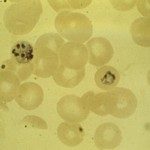Link to Pubmed [PMID] – 38517273
Link to DOI – 10.1002/smtd.202301634
Small Methods 2024 Mar; (): e2301634
Developing a standardized screening tool for the detection of early and small hepatocellular carcinoma (HCC) through urinary metabolic analysis poses a challenging yet intriguing research endeavor. In this study, a range of intricately interlaced 2D rough nanosheets featuring well-defined sharp edges is fabricated, with the aim of constructing diverse trimetal oxide heterojunctions exhibiting multiscale structures. By carefully engineering synergistic effects in composition and structure, including improved adsorption, diffusion, and other surface-driven processes, the optimized heterojunctions demonstrate a substantial enhancement in signal intensity compared to monometallic or bimetallic oxides, as well as fragmented trimetallic oxides. Additionally, optimal heterojunctions enable the extraction of high-quality urinary metabolic fingerprints using high-throughput mass spectrometry. Leveraging machine learning, discrimination of HCC patients from high-risk and healthy populations achieves impressive performance, with area under the curve values of 0.940 and 0.916 for receiver operating characteristic and precision-recall curves, respectively. Six crucial metabolites are identified, enabling accurate detection of early, small-tumor, alpha-fetoprotein-negative HCC (93.3%-97.3%). A comprehensive screening strategy tailored to clinical reality yields precision metrics (accuracy, precision, recall, and F1 score) exceeding 95.0%. This study advances the application of cutting-edge matrices-based metabolic phenotyping in practical clinical diagnostics.

